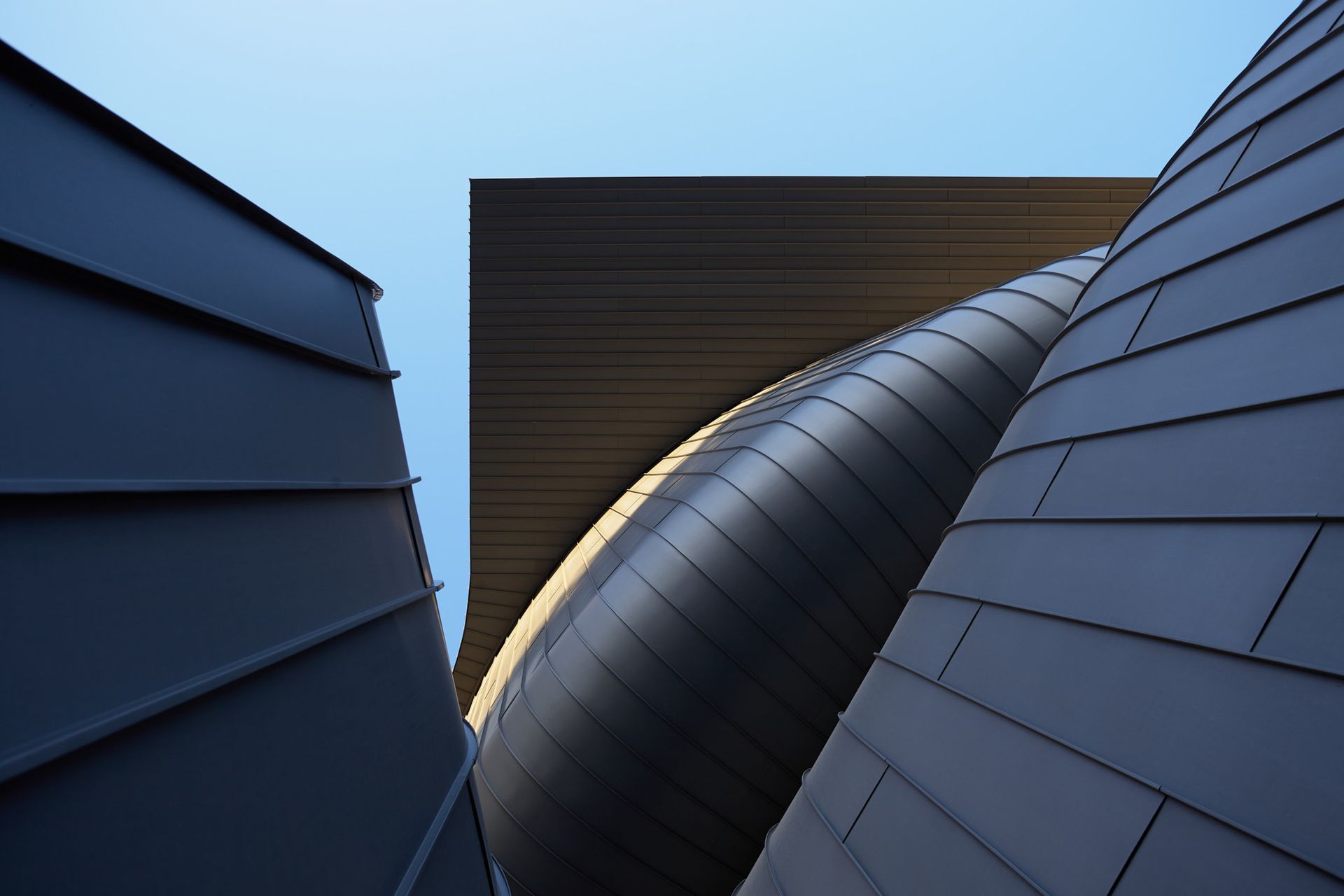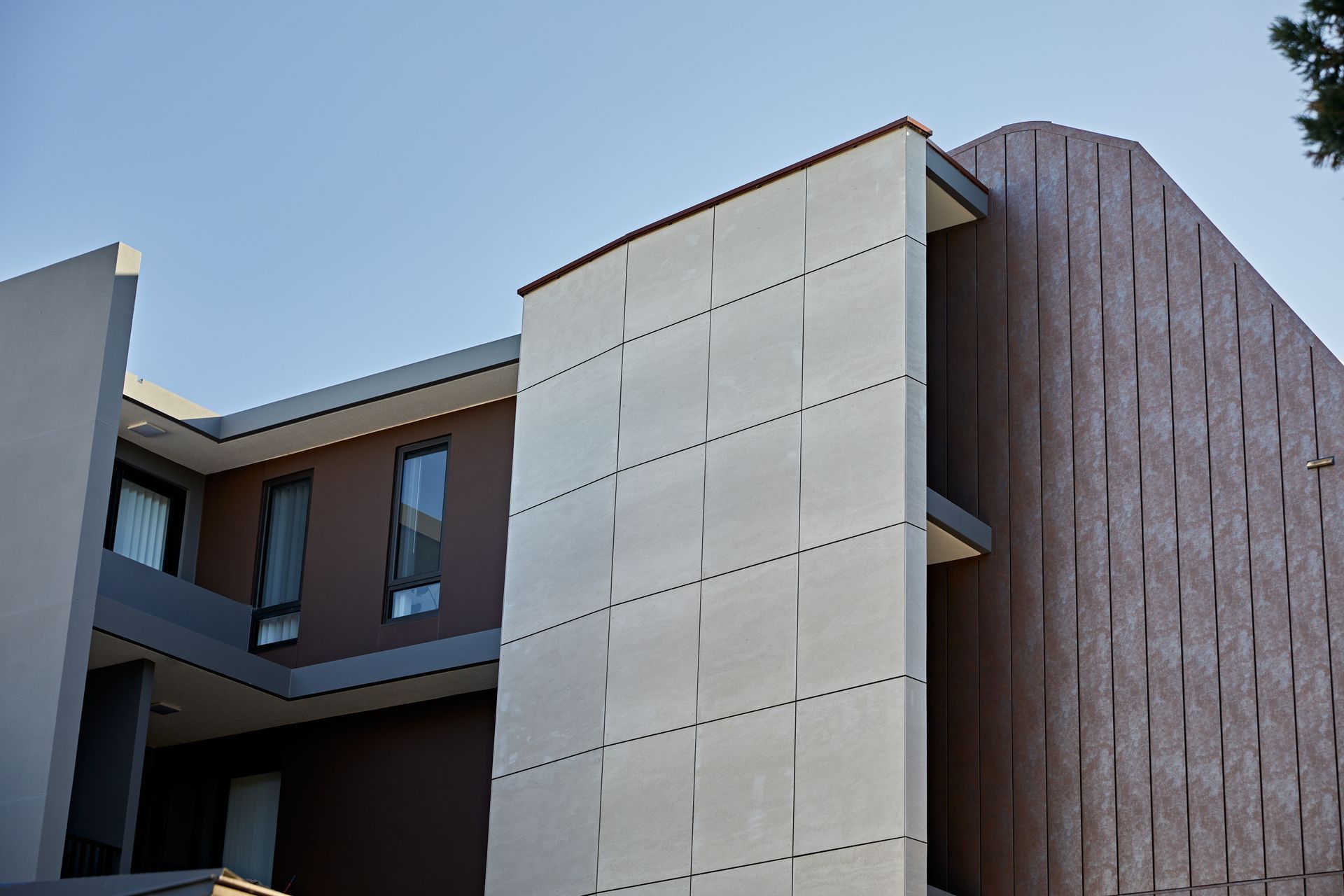Sustainable cladding materials - a breakdown

The exterior cladding you choose for your home is a crucial part of expressing its style and accentuating the lines and character of the building. It is arguably one of the most important exterior design decisions when building your home, defining the aesthetic and keeping you secure for years to come. However, not all cladding is made equal and when it comes to sustainable wall cladding, there are a number of points to consider. Here are four options, each offering a different perspective on what it means to be sustainable.
1. Brick cladding
Bricks are a classic cladding material and are widely used the world over. They have various merits when it comes to sustainability, including increasing the energy efficiency of a building and requiring almost no maintenance over time. Sustainability is often thought of in terms of the whole-of-life impact of a product and this is where bricks excel as an option for sustainable exterior cladding. When combined with the appropriate thermal insulation, bricks can offer a thermal mass benefit that allows for the reduction of energy, keeping your home warmer in winter and cooler in summer.
Clay bricks are made from organic minerals found in abundant sources of clay. This means they are free from added contaminants and don’t require painting, sealing or any other treatment to ensure their durability and performance over time. Given the high temperatures they are fired at, clay bricks will always retain their colour ensuring great stylistic consistency. Bricks can also be salvaged, reused and recycled making it a fantastic sustainable facade material.
Related article: Weatherboard vs. brick: a look at the pros and cons of each
2. Concrete cladding
While concrete might trigger alarm bells in a conversation about sustainability, it does have some strong traits that make it worthy of mention. Concrete’s most relevant quality is its durability, a strength that few other materials can match. In Australia, it’s generally expected that a new build home should last at least 60 years, while accepting that many building products included will last less than that. Quality concrete should easily exceed this and is considered one of the most robust cladding materials around. Its longevity means it will outlast many other building materials meaning much less strain on resources in general.
3. Metal cladding
Many metals are considered sustainable when it comes to cladding thanks to their ability to be recycled and durability in challenging conditions. Copper, for example, is highly regarded and much sought after. Its ever-changing appearance and striking patina make it very popular for high-end projects. Aluminium is one of the most used metals in the world, widely used for cladding. Its durability, resistance to corrosion and ability to be recycled without losing quality have seen it win many fans in the world of sustainable architecture. Lastly, steel makes the list for its strength, reliability and for being one of the easiest metals to recycle without losing its integrity.

4. Thermally modified timber cladding
Timber cladding or wood cladding is iconic when it comes to the Australian home. Thousands upon thousands of Australian homes have stood for decades, if not longer, with classic weatherboards doing the job year in, year out. However, despite this fact, timber on its own is not always the most durable of choices, especially when consistently exposed to harsh environmental conditions. While timber can, and has been treated timber for decades, when it does come to the end of its life, the chemicals used during the treating process mean it isn’t biodegradable and can’t be burned.
Thankfully, these issues led to the development of a range of alternatives including thermally modified timber. Thermally modified timber is a viable and long-lasting solution that utilises no chemicals during the manufacturing process. Instead, its makeup is altered during the modification process, using heat and steam. With no hazardous chemicals ingrained, it’s completely biodegradable at the end of its lifecycle.
The modification process involves exposing the timber to temperatures of up to 190℃. The moisture content is removed with the chemical and physical properties altered, giving it extended durability without chemical intervention. It’s for these reasons thermally modified timber is thought of as one of the best sustainable exterior cladding materials available.
Related article: 13 modern exterior cladding ideas to inspire your next project

5. Fibre cement cladding
Fibre cement cladding is a composite material made from cement, sand, and cellulose fibres. It offers a sustainable alternative to traditional materials like timber or vinyl. This cladding has a long life-span is resistant to rot, insects, and has been deemed non-combustible, and requires minimal maintenance. It can be manufactured to mimic the appearance of wood, stone, or brick, providing versatility in design while offering the benefits of a more sustainable material. Fibre cement cladding can also be recycled at the end of its lifecycle, reducing waste and environmental impact.
6. Composite cladding
Composite cladding is made from a combination of recycled wood fibres and plastic materials. This blend creates a durable, weather-resistant material that requires minimal maintenance and offers excellent longevity. Composite cladding products and composite materials often come in pre-finished panels, reducing the need for painting or sealing, further enhancing its sustainability. This cladding is also resistant to rot, insects, and fading, making it an ideal choice for as a sustainable cladding solutions.
High-quality sustainable cladding for your home
Whether you are building a traditional family home in the suburbs or a modern holiday home by the beach, you’ll be able to find a sustainable cladding material that will suit your needs. Eco-friendly buildings are, quite rightly, the way of the future, steering us towards better outcomes for one and all.
Related article: 13 stunning interior wall cladding ideas to inspire you


